Take a 5-Minute Recess: 3 Yoga Poses to Reduce the Negative Effects of Sitting
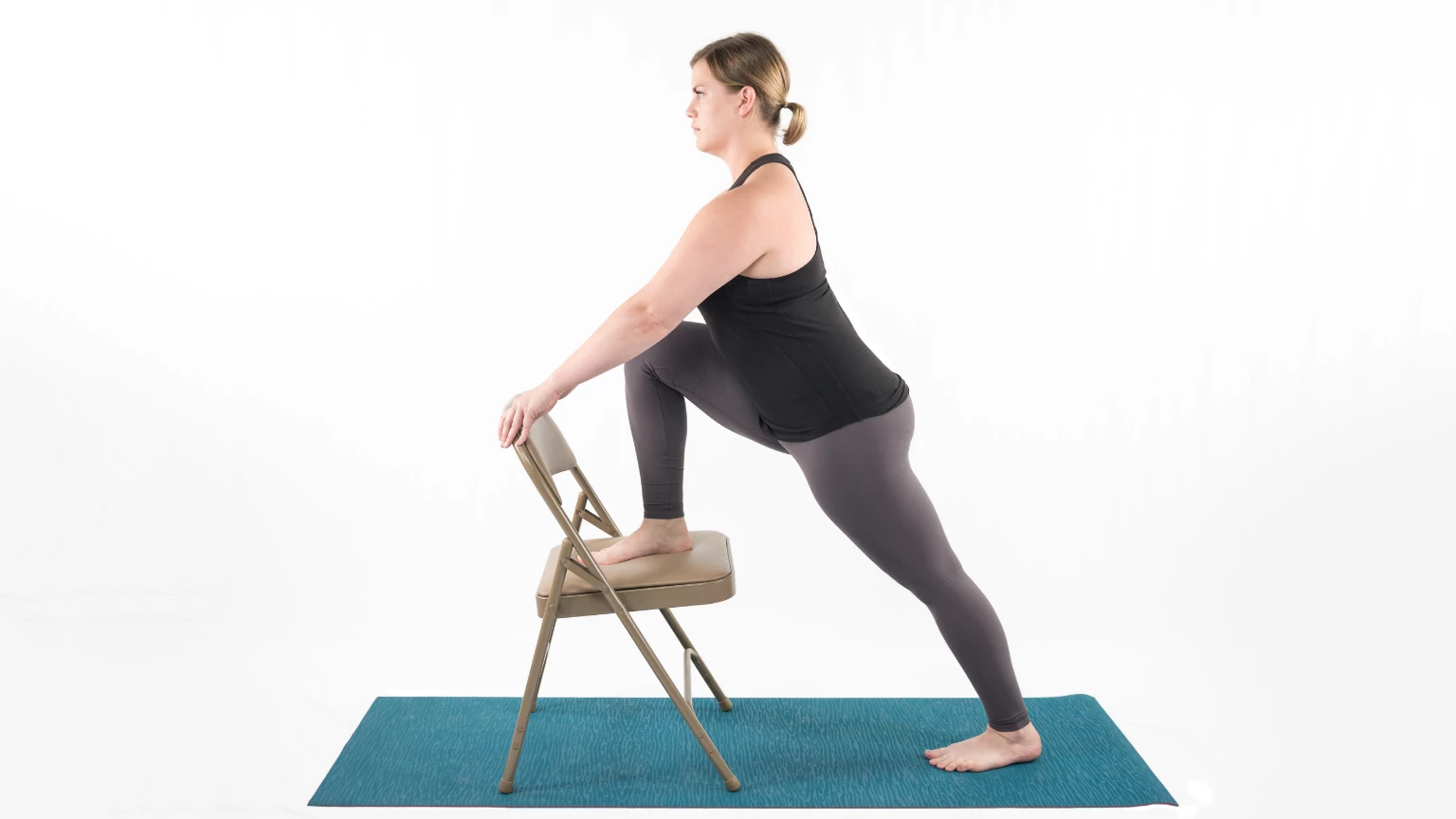
There are several ways you can counteract the adverse effects of sitting. First, examine the way you sit and notice if the chair you sit in is hurting you or helping. Second, learn to take a five-minute-stand-and-move break every hour. During that break, practice my three top yoga poses to counteract hours of sitting, improve posture, and relieve back pain.
Change the Way You Sit
Studies have suggested that it is not so much about how long we sit, but rather how poorly we sit without appropriate support. Now that most of us have a computer or another digital device attached to us, figuratively speaking, we needed to re-examine how we sit.
I understand the basic principles of sitting on my sit bones as shown by Jean Couch in an NPR article titled, If Your Chair Hurts Your Back. Couch is a seasoned yoga teacher from Palo Alto, California, and author of the classic book, Runner’s Yoga. Her suggestions are especially helpful when we find ourselves in different kinds of chairs.
Something she mentioned that I had not fully considered in my own sitting was how low the knee placement needs to be to bring the pelvis and thighs to a neutral position. Astronauts discovered this position when they were floating in space. A regular chair holds the knees at 90 degrees, while the neutral position has the knee below the hip joint at 120 degrees.
3 Main Reasons Sitting is Bad for Our Health
1. Sitting for long periods with our legs at a 90-degree angle cuts off the flow of circulation to our legs, causing the calves to cramp and reducing cardiovascular function.
2. Ever notice how you start to feel brain-dead after an hour or two at your desk? Chances are your hips are at the 90-degree angle which causes us to rock back onto our sits bones, collapsing our spine and chest thus lessening the supply of oxygen to our brains, according to a UCLA study. (1)
3. Collapsing our spine forward over and over causes intervertebral disc compression and degeneration, which leads to chronic, and at times, not so easy to manage back pain and loss of resilience.
Yoga Poses to Undo the Damage of Sitting
When one Googles “yoga poses to counteract sitting all day,” one finds a broad range of options, mostly geared to bodies who already have a yoga practice and also an impressive range of ability. In my experience, many of the poses fail to address the needs and abilities of people who really do spend five to eight hours a day at their desk.
If you are an occasional yoga practitioner, I suggest you look into this list of poses at Yoga U Online. Or if you have some back concerns, consider getting a copy of my book Healing Our Backs with Yoga: an essential guide to back pain relief.
Now Let’s Get Down to Basics
Here are my three chosen yoga poses everyone can benefit from as a five-minute yoga recess from your desk.
Yoga Pose 1: Utkatasana (Fierce Pose or Chair Pose) 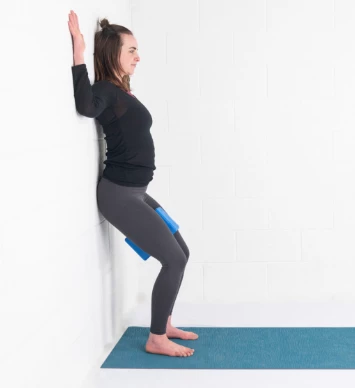
This pose is my go-to for clients of all ages to help strengthen the pelvic floor muscles, stabilize the sacroiliac joints, and tone the spine. Also, this pose powerfully warms the deep hip muscles and improves circulation.
-
Start with your back to the wall, press the center of your sacrum to the wall, hold a block between your knees, and place your hands either on your hips, or raise them overhead.
-
Exhale and squeeze the block with your knees to draw your sitting bones toward each other, and then scoop the bottom of your belly in and up.
-
Hold for four breaths. Repeat four times.
Caution: High blood pressure? Keep your hands on your hips or reach them forward parallel to the floor.
Yoga Pose 2: Virabhadrasana I (Warrior I Pose) 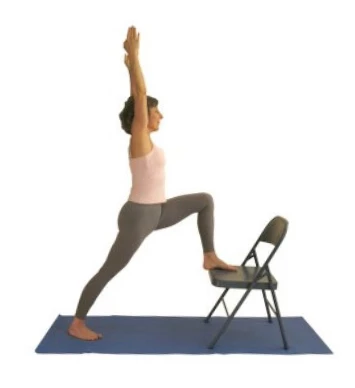
This version of Warrior I Pose is a standing lunge with a foot on a chair. This pose will lengthen the calf and front thigh muscles, along with the deep abdominal muscle known as the psoas.
These muscles are notoriously short in people who spend time sitting at a desk. The pose also extends the spine, decompressing both the spine and the lungs to expand the breath and oxygenate the brain.
-
Stand back from the chair 2.5 to 3 feet. Place one foot on the chair with the hips facing forward.
-
Root down into the outside edge of your rear foot and fully extend that knee.
-
Lift the bottom of your belly and draw your buttocks down. Firm your buttocks.
-
Inhale, raise your arms and lift your spine out of the hips. Then bend your front knee any amount.
-
Pulse in and out of the pose, raising and lowering your arms when you bend and straighten the knee.
Caution: High blood pressure? Lift your arms out to the sides rather than overhead.
Yoga Pose 3: Urdhva Purvottanasana (Upward Plank Pose) 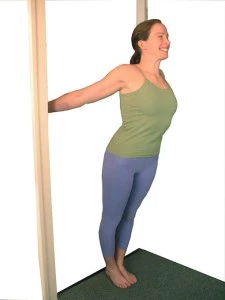
This version of Urdhva Purvottanasana is a Standing Upward Plank Pose or “door chest hang.”
This pose helps expand the muscles of the top chest and front arm to overcome the contraction and slump of the chest that happens automatically when we sit at the computer. This position reinvigorates and uplifts your heart and mind while protecting your wrists and thumbs.
-
Stand with your feet in the middle of the doorway, roll your shoulders back and place your palms inside the door frame with your fingers wrapping around the edge.
-
Lift your breastbone from the bottom to the top and roll the tops of your shoulders back.
-
Step and/or lean forward, pressing your heels down while lifting the bottom of your belly in and up toward the chest.
-
To deepen the stretch, walk your hands up the door frame any amount. Be sure to pin your shoulder blades to your back ribs.
Caution: If you have pain in the elbows due to hyperextension, then micro-bend them so that more of the stretch lands in the upper arm and chest.
Learn more reliable poses in my Yoga U Online course: Yoga for a Healthy Spine: The #1 Key to Enhance Strength, Improve Posture, and Prevent Osteoporosis.
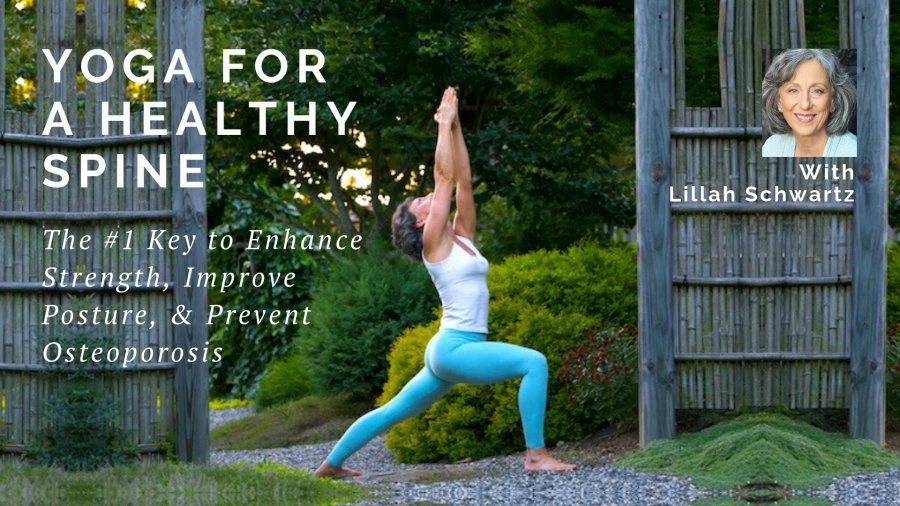
Reprinted with permission from Lillah Schwartz’s Yogawithlillah.com.

 Lillah Schwartz, C-IAYT Certified Yoga Therapist, is an Asheville-based yoga teacher, teacher trainer, and author with more than 35 years of experience. A certified yoga therapist, her specialties include her book, Healing Our Backs with Yoga: An Essential Guide to Back Pain Relief, which came out in 2016. Lillah also has three therapeutic yoga DVDs for back pain relief.
Lillah Schwartz, C-IAYT Certified Yoga Therapist, is an Asheville-based yoga teacher, teacher trainer, and author with more than 35 years of experience. A certified yoga therapist, her specialties include her book, Healing Our Backs with Yoga: An Essential Guide to Back Pain Relief, which came out in 2016. Lillah also has three therapeutic yoga DVDs for back pain relief.
Resources:
(1.) https://www.brit.co/sitting-too-long-health-risks-bad-for-brain/



